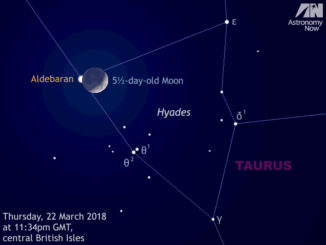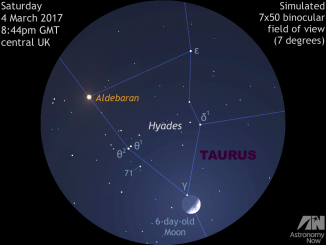
See the setting Moon hide bright star Aldebaran late on 22 March
On Thursday, 22 March observers in the British Isles with clear skies can see the 5½-day-old setting crescent Moon pass in front of first-magnitude star Aldebaran in the constellation of Taurus soon after 11:30pm GMT. Depending on where you live in the UK, you might just see the star reappear again shortly before the pair set.









